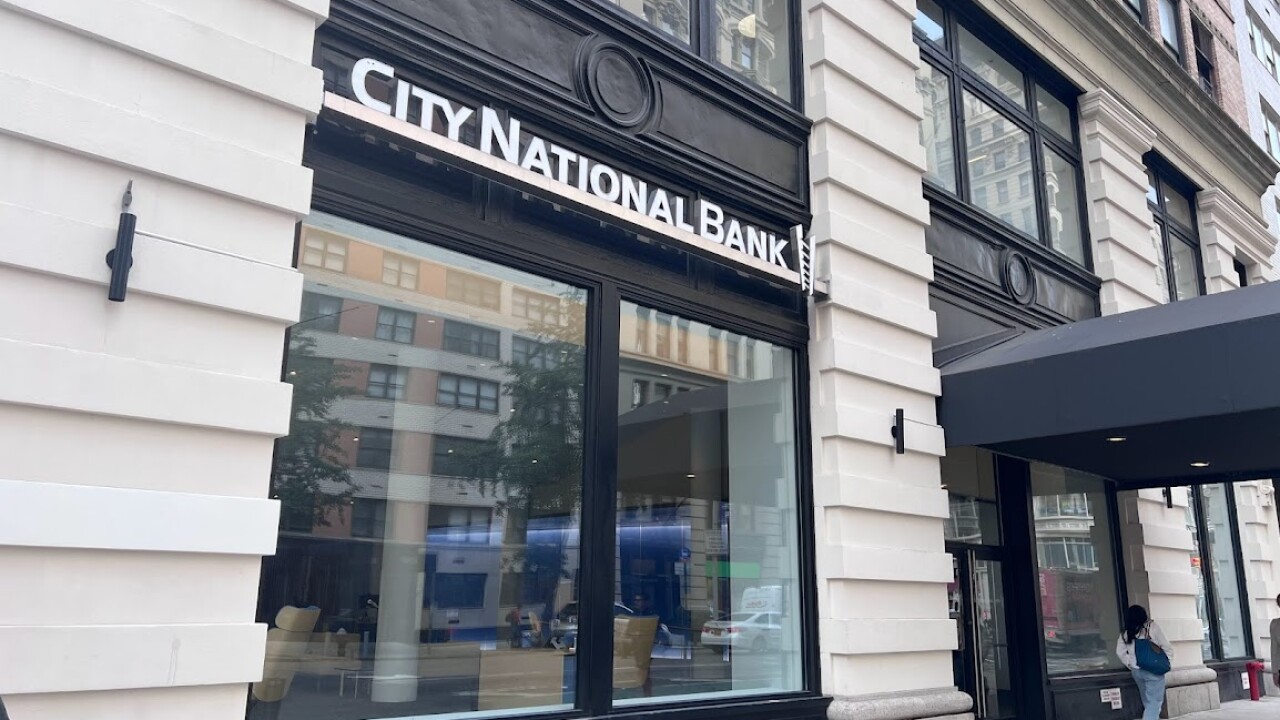
Now that it's fully independent of Western Union, business payment company Convera plans to fuel its growth with a massive technology overhaul.
Convera, which used to be Western Union Business Services before the spinoff, has contracted with bank technology firm Temenos to modernize its payments capabilities, using the cloud to add scale and time is of the essence.
B2B payments are expected to migrate to real-time processing at a fast rate, diverting between $19 trillion and $27 trillion away from checks and ACH payments by 2028, according to
Convera plans to double its own processing volume during that period as it increases support for real-time settlement and other digital payment options.
"On any given day, we may process up to a billion dollars in payments," said Patrick Gauthier, CEO of Convera. "The CEOs of our partner firms need to know we can do that."
The cloud is crucial to this strategy, said Gauthier. "It gives us more agility and scalability and it will make payment orchestration simpler."
Convera was originally part of Western Union. Goldfinch Partners and The Baupost Group acquired Western Union Business Services in 2021 for $910 million and rebranded the firm. That transaction closed in July 2023.
Convera will replace a legacy payment processing system with Temenos' cloud-hosted platform to automatically route payments over Convera's network, standardizing international commercial payments. Convera will also use Temenos' data hub to support real-time data management.
Temenos' platform will integrate with Convera's existing infrastructure, limiting the amount of IT work required for Convera to add scale. The deployment includes support for ISO 20022, an international messaging standard designed to accommodate faster payment processing.
The cloud can enable transaction flow worldwide without the need for local or regional servers to support the offering, so it's an excellent solution to enable cross-border payments and commerce, said Thad Peterson, a strategic advisor at Datos Insights.
"While there are always going to be challenges in managing local payment alternatives, regulation and compliance, a cloud-based solution removes one of the significant challenges in cross-border payment delivery and acceptance," Peterson said.
The workflows for commercial payments are more complex than for consumer remittance, which is Western Union's core business line, according to Gauthier.
"Remittance is a straightforward workflow from person to person," he said. "But when we service a university, or an importer of goods, there's a set of use cases and it's important to be well-integrated into the financial infrastructure that these firms use."
Convera has more than 1,800 employees in 30 offices. It is one of the world's largest nonbank cross-border business payment and foreign exchange companies, processing more than $110 billion in payments volume yearly for more than 30,000 business clients, educational institutions, financial institutions, law firms and non government organizations in more than 40 countries and 140 currencies.
Its expansion will add volume, partners, clients and geographic territory, requiring frequent updates.
"The cloud gives you an ability to reconfigure your offering to support new services and uses, and you also have the ability to work with third parties," said Gauthier.
Temenos' main business is selling core processing software to financial institutions. It has added more
The migration to real-time settlement is driving demand from current and potential clients, according to Philip Barnett, president of the Americas for Temenos.
"A lot of them are trying to do this but they are living in a legacy ecosystem," Barnett said. "The interest is not just in speeding payments but in supporting a broader platform."
Real-time settlement has existed in the U.K. for nearly ten years, and in the U.S. for about six years, but is expected to grow quickly in the years ahead due to the impact of the FedNow network in the U.S.
Many financial institutions and other businesses have looked into updating older payment systems to accommodate growth in digital transactions and faster settlement.
That has led payment technology companies to upgrade their own technology to make it easier for their clients to modernize.
"Having a modern payment system that is easy and cheap to maintain is an obvious benefit in terms of cost," said Gareth Lodge, a senior analyst of banking at Celent. "Running it in the cloud reduces that cost further."
Real-time data management will also be key, according to Lodge. Answering questions such as "where is my payment?, What is the FX rate, etc.," he said. "The increase in straight through processing in the advanced exception handling tools will make a material difference."






